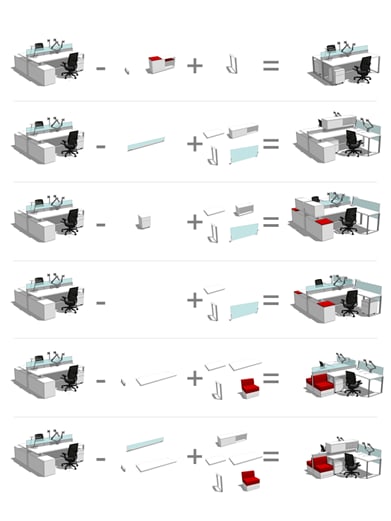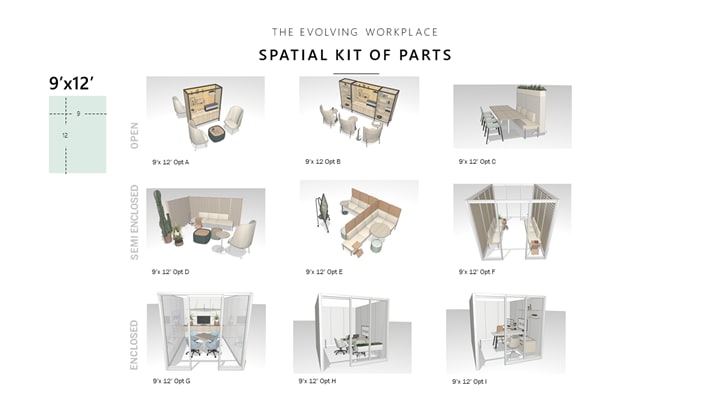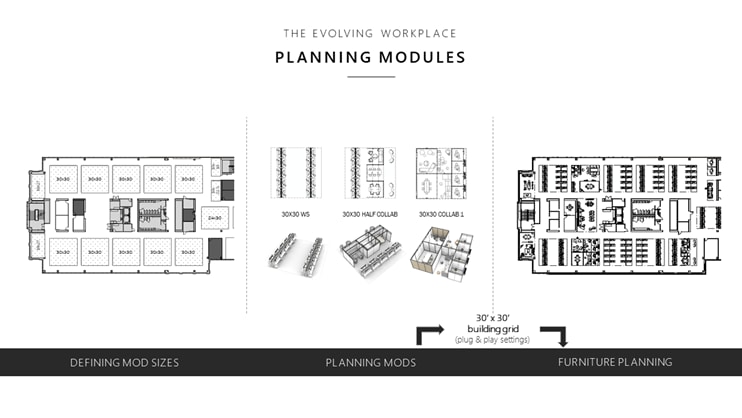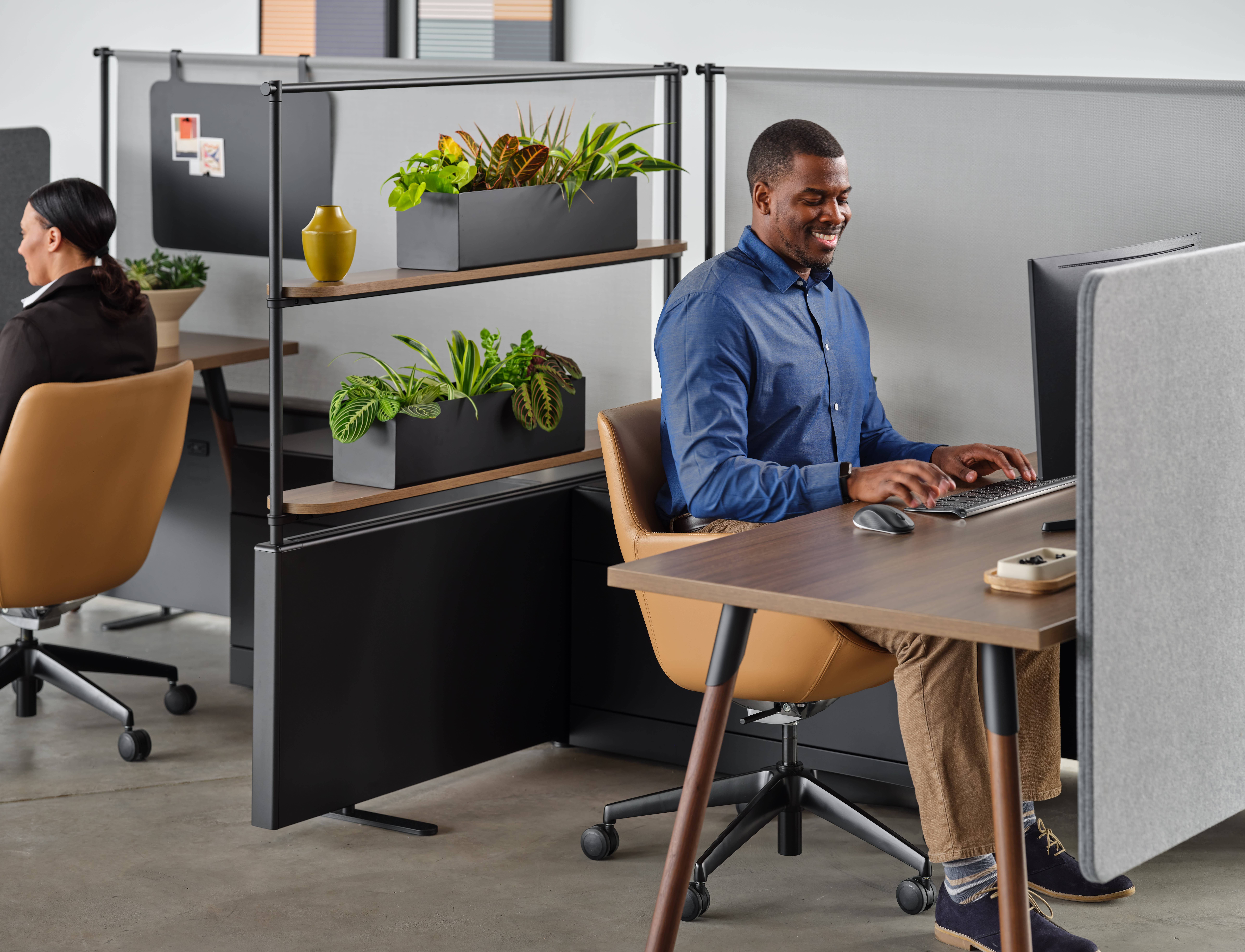Change is constant. The speed of change and the factors causing it are unknown variables. That said, we can typically stand back and assess the known and make intelligent predictions on what could happen. For workplaces, that is taking the time to understand an organization’s culture, short- and long-term goals, and individual and team activities.
Workplaces are a significant investment for any organization. When a new headquarters is built or an existing office space is redesigned, companies want to feel like the investment they are making will last. They want to be confident that they have made the right decisions. Businesses that thrive are ones that anticipate and evolve with the ever-changing requirements of their consumer. Employees are consumers of the workplace and organizations need to make sure they are meeting their expectations. The expectations of the employee in 2019 are vastly different than the employee today and the employee of tomorrow. Your workplace needs a system in place that can keep up with those changing needs.
Strategies That Can Be Used to Plan for Workplace Change
If an organization is trying to make their investment last longer, they need a workplace that has a solution designed to be efficient and adaptable. They need to plan for change. We can design with a variety of planning methodologies to support the goals of each unique project and meet the needs of the evolving workplace. Kit-of-Parts Solutions and Planning Modules are two of those methodologies.
Kit-of-Parts
Most everything is made up of pieces and has a ‘Kit-of-Parts’. When we talk about Kit-of-Parts Solutions, we are referring to a thoughtfully selected group of furniture pieces that we can mix and match to create a variety of applications that meet diverse needs.
At the workstation level, instead of designing completely unique workstations for different work needs, you look at the commonalities and then add pieces to the kit-of-parts to fit unique needs like storage, surface, or orientation. With a well-designed KOP, you can easily accommodate moves, adds or changes as needs change versus every three to five years with a huge redesign.
As organizations shifted their focus to Team activities, we evolved the Kit-of-Parts concept and applied it to the entire floorplate. We started to think about Spatial Kit-of-Parts – blocks of space. We start by designing within a common space size, so applications can be easily interchangeable. For instance, if you have a private office, we will plan the size of that space to easily convert into a 2-person private office or a 4-person meeting room. If you use demountable walls, you can size the space to be divided into two focus rooms. We will ensure collaborative spaces are designed within the same footprint to accommodate team moves as needs change. Ideally, your workstation sizing corresponds so those areas can be interchanged as well.
Planning Modules
The concept of Planning Modules was born when solving a client’s problem. Our client had a large amount of real estate and was challenged with managing multiple moves, adds, and changes. They needed a better way to budget for new and existing spaces. A Kit-of-Parts Strategy was not enough – we needed a larger strategy.
We took the entire floorplan, blocked out all access/ egress along the main pathways, and we were left with large blocks of space. Then, we looked for the most common, manageable designed space and divided out the floor. A 30’x30’ block of open space was repeated as many times as possible across the floorplate. From there, we took that 30’x30’ space and designed all the options that might be needed for that workplace.
One option could be two rows of 6x6 workstations. The next option could be groups of private offices and meeting rooms and so on. The idea is that you create a playbook of pre-designed solutions that are interchangeable. Each of the 30x30 Planning Modules has a price. You can price the cost to change from Option 1 to Option 2 and know what needs to be ordered or pulled from attic stock. You will have a system that allows spaces to easily be redesigned and allows clients to quickly understand preliminary budgets.
Planning Modules utilize Kit-of-Parts solutions, the difference is that Planning Modules require a building infrastructure to support it. Access to power, light, and HVAC systems all must be designed to allow for this ultimate flexibility.
The amount of change we plan and design for varies; when a client needs to plan for a lot of change or wants to “future proof” a space, my mind immediately goes to Planning Modules. So much of what limits us in changing spaces is access to power, built walls, and HVAC. If the building infrastructure is designed to put workstations and meeting rooms anywhere, we can add a Kit-of-Parts that can be reconfigured, interchanged, and moved around and create a system that can constantly evolve with you.
Knowing When to Change
Clients are asking “How will I know if we got it right?” “How will I know when something needs to change?” Space Utilization and Occupancy Technologies, combined with a consistent feedback loop, will give you stronger data. You will have real-time data on which spaces are being used, how often, and by how many people. You can then identify and investigate why any spaces are underutilized.
You can see if your 8-person conference room is only ever being used by four you can decide to divide that larger space into two. If you also provide a system to gather feedback on whether spaces meet the needs of the individual or group, you have more detailed information to add to the analysis.
Your workplace should work for you. If it is not, you will have direction on what to do based on data that shows how spaces are being used and end-user feedback. It could be as minor as a space having too much sunlight, or a larger problem of not having enough meeting rooms. Either way, you will have the information on what is happening in your workplace and you can make an educated decision on what to do about it.
Spatial Kit-of-PartsStrategically plan for workplace change by designing within particular parameters of space using easily interchangeable product applications. |
Measuring SuccessSpace utilization and occupancy technologies provide organizations with real-time data on why specific settings may be under-utilized and a guide to pivot when change is needed. |
Planning ModulesIf the building infrastructure is designed so we can put workstations and meeting rooms almost anywhere – then, we add a kit of parts that can be reconfigured, interchanged, and moved around, we create a system that evolves with constantly changing needs. |
Our virtual learning series is all about staying connected and having compelling conversations about the hottest topics in our industry today. Each month we have a panel of experts, from diverse disciplines, discuss a myriad of topics that center around the workplace. Join us!








